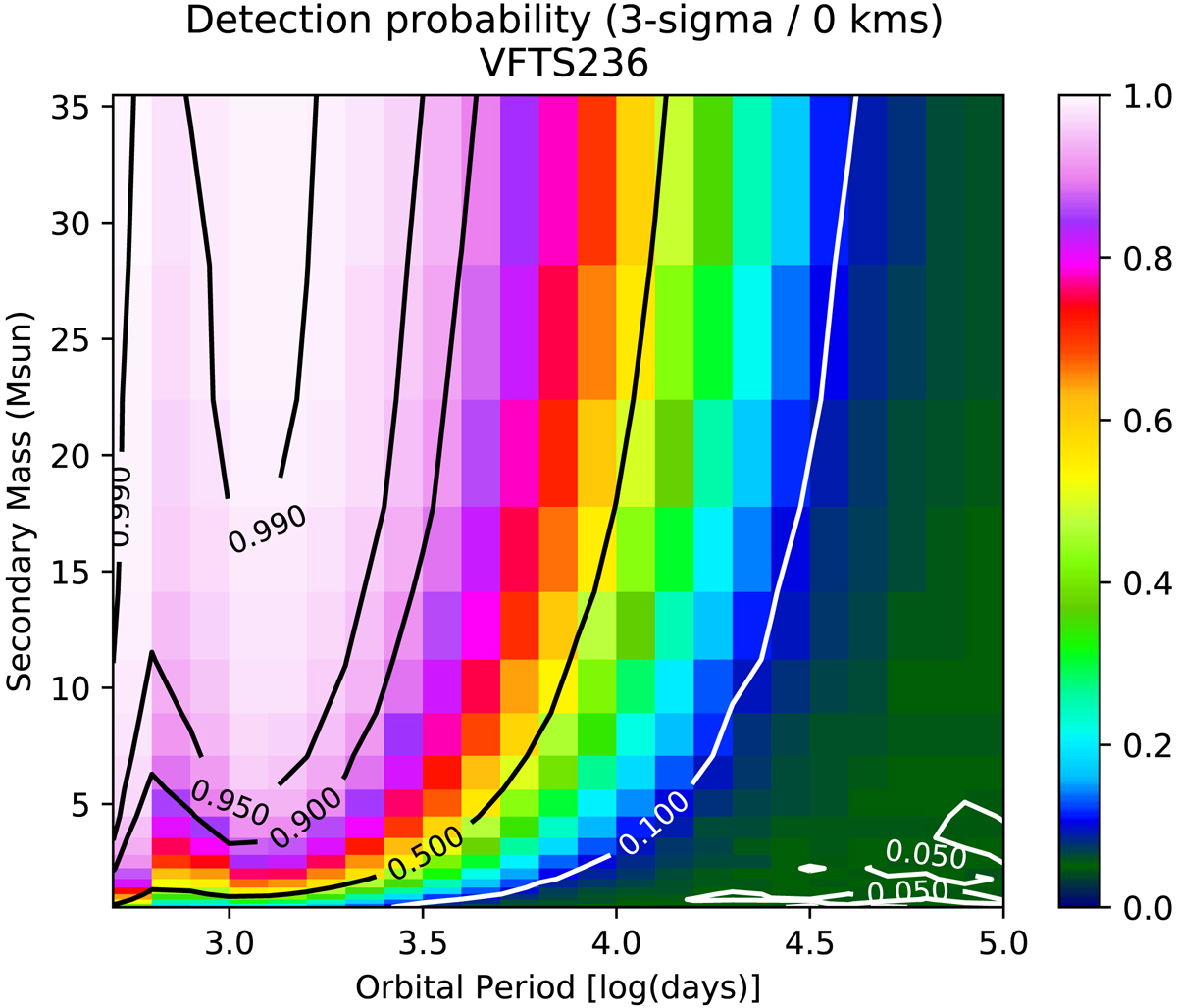Fig. 7.

Population of simulated binary systems that fulfill the detection criteria of Eq. (2), given the observations of VFTS 236 for σlim = 3.0 km s−1, Δ RVmin = 0.0 km s−1 (i.e. the weakest constraints considered in Fig. 6). Each grid point indicates the result of 10 000 simulations, where the scale is determined by the fraction of systems that meet the variability detection criteria. Contours indicate the 1, 5, 10, 50, 90, 95, 99 detection percentiles. The mass of VFTS 236 is 15.5 M⊙ (B19), therefore, we can reject systems with orbital periods log P [days] < 3.2 based on the size of the RSG primary. From the simulations we can reject orbital periods log P [days] < 3.5 for mass ratios approaching unity at the 90% confidence level. Binary systems with longer orbital periods or lower mass ratios would be able to reproduce the observations.
Current usage metrics show cumulative count of Article Views (full-text article views including HTML views, PDF and ePub downloads, according to the available data) and Abstracts Views on Vision4Press platform.
Data correspond to usage on the plateform after 2015. The current usage metrics is available 48-96 hours after online publication and is updated daily on week days.
Initial download of the metrics may take a while.


